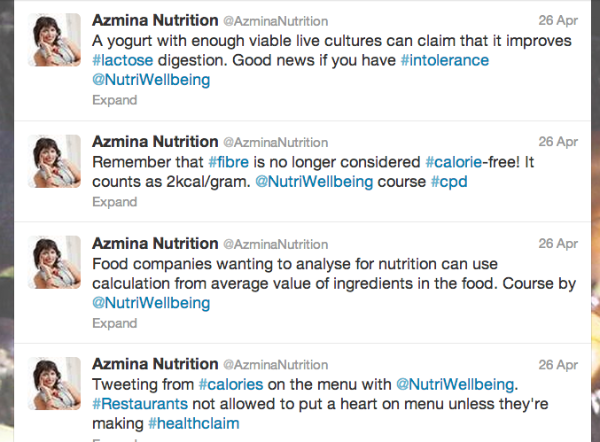The Department of Health Responsibility Deal has encouraged manufacturers to gradually improve the nutritional content of their products. Restaurants, especially big chains, are printing calorie values on their menus. It’s vital that brands use qualified experts to nutritionally analyse their range, and dietitians need to have the knowledge and skills to provide accurate calorie values on menus and food labels.
I attended last month’s Calories on the Menu course organised by Nutrition & Wellbeing. We met at a convenient location in London and were an intimate group of about 12 people. We had access to a laptop and were coached through the up to date regulations on health claims, front-of-pack labelling, calculating fruit and veg portions in composite foods, and more. We had hands-on training on calculating calories using Saffron software and the delegate handouts were comprehensive and professional. My 10 top tips…
10 take-outs from the day:
- The calories in simple meals, such as sandwiches, can be calculated with accuracy by a caterer, but more complicated recipes need the specialist knowledge of a dietitian or nutritionist
- Restaurants are a commercial enterprise so any terms like ‘low fat’, ‘healthy’ or images (like a heart) must comply with the regulations.
- Fibre is now included in energy calculations. Fibre is not calorie-free; each gram gives you 2 kcals.
- There are two methods of fibre analysis – Englyst which analyses non-starch polysaccharides (NSP) and AOAC. Most manufactured foods now use AOAC, with a GDA for fibre as 24g.
- Healthcare professionals can recommend a branded product that is also making a health claim so long as the information is compliant with the EFSA Regulations and is not represented in a misleading way.
- Each recipe needs a complete list of ingredients with precise quantities and preparation information. Cooking losses and cooked weight also need to be recorded.
- Suppliers data can be used – make sure you have the appropriate paperwork to verify it.
- Nutrition Data has to be per 100g or per 100ml. Per serving data is voluntary.
- Traffic light sign-posting criteria are different for drinks. If total sugars in a drink are high, but the sugar comes from fruit or milk, you may not necessarily get a red light.
- Later in 2013 traffic light labelling will change and the next course will be based on the changed traffic lights.
Want to know more? Check out my tweets below from the course and visit Nutrition & Wellbeing. Also see the EFSA Health Claims.



